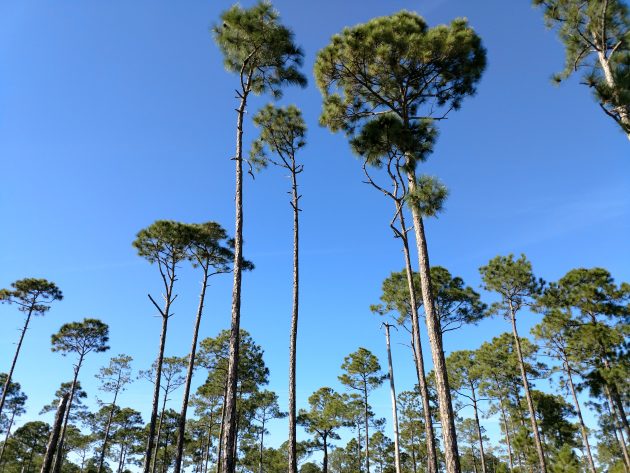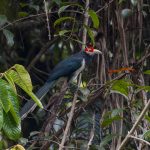
Most of my blogs for 10000 Birds fall into the”trips” category. I go somewhere new, I’m excited about the experience, I write about it.
But all birders know the value of your home turf, a.k.a. where you bird the most. Your home turf could be your yard, your neighborhood, your county, the place where you know a certain tree limb is popular for Brown-headed Nuthatches, a lamp-post that does double duty as Red-shouldered Hawk perch, or a mailbox known for hosting an annual Carolina Wren nest. Through frequent visits, you time the changing seasons by the alterations of bird activity.
For me, my current home turf is a 2.5 mile loop by my office at the Choctawhatchee Basin Alliance. Down a pine-lined nature path, past a library, weaving through a small park, across a forested road and then back again, I make the walk one or two times a week at least, taking the spins on my lunch break to reinvigorate my brain for the afternoon.
In the summer, my bird lists mostly consist of mockingbirds and the ever-aloft Turkey Vultures, but winter in Florida is an excellent time to look for different avian varieties: the songbirds are back.
A frost covered the ground when I left for work last Monday, but by afternoon the sun shone and temperatures hovered in the low 60’s, plenty warm enough for just jeans and a sweater. I didn’t carry binoculars – which was a mistake – but had my eBird app up and running.

The first birds were normal; the Turkey Vultures, Mourning Doves, a distant Red-bellied Woodpecker cackling. But as I swung into the park, past a patch of scrubby trees and high grasses, I came face-to-face with a giant mixed flock. Trying to identify palm-sized passerines without binoculars is maddening, and I psh-ed a few birds closer in the desperate attempt to catch some field marks.
Eventually, I just stood there quietly, spotting an eye ring here, a yellow spot there, a rufous crown or black mask. A Common Yellowthroat and Blue-headed Vireos became work-walk firsts for me, mixed in with Carolina Chickadees, Chipping Sparrows, and Yellow-rumped Warblers. Farther on, in a tall stand of pines, I recognized a pair of Yellow-bellied Sapsuckers – another first – with the usual Red-bellied Woodpecker and nearby Eastern Towhees.
A wooden bridge crosses a marshy area near the local high school, filling with water after a rain and astonishingly dry the rest of the time, dotted with Gatorade bottles and soda cans from errant students. That afternoon, the dense canopy of Titi and Yaupon Holly hosted more Yellow-rumps, but also a diminutive Ruby-crowned Kinglet, a bright American Robin and its relative, the Hermit Thrush. A Gray Catbird whined in the brush, and overhead a flock of Eastern Bluebirds looked down upon my head.
An hour later, I sat back in my desk chair, a species list totaling 19 birds varieties on my smart phone. It remains the largest total on my one of my walks, and not bad for a suburban environment in the middle of the day (without optics!). I had added new birds to my home turf record, and – best of all – had a ton of fun!













Leave a Comment